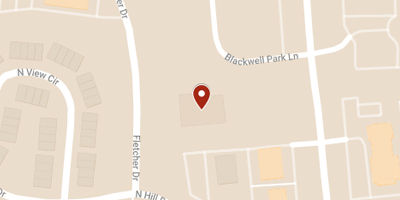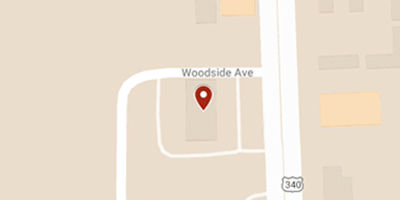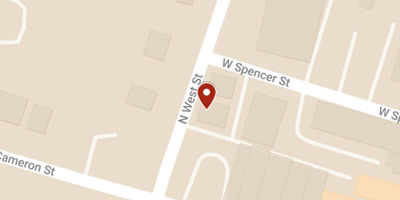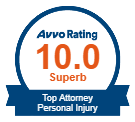.jpeg) The Brain Injury Association of America (BIAA) and the Centers for Disease Control and Prevention (CDC) report that more than one million people across the U.S. sustain brain injuries each year. Hundreds of thousands of brain injury sufferers are hospitalized, and more than 50,000 victims die annually from brain injuries. The total number of traumatic brain injury (TBI) victims living in the U.S. is more than five million. A significant percentage of concussions and other brain injuries result from work-related accidents.
The Brain Injury Association of America (BIAA) and the Centers for Disease Control and Prevention (CDC) report that more than one million people across the U.S. sustain brain injuries each year. Hundreds of thousands of brain injury sufferers are hospitalized, and more than 50,000 victims die annually from brain injuries. The total number of traumatic brain injury (TBI) victims living in the U.S. is more than five million. A significant percentage of concussions and other brain injuries result from work-related accidents.
Work-Related Head Injuries
Head injuries are categorized as either open or closed. An open head injury occurs when a sharp object penetrates the skull and pierces the brain. This can happen when a hard impact fractures your skull and bone fragments penetrate the brain matter, or when broken glass or torn metal from a vehicle accident cuts into the head. A closed head injury results from a hard external impact that does not fracture the skull. The most common closed-head injuries are contusions and cerebral concussions.
Common Symptoms of Brain Injuries
Brain injuries are also categorized as mild, moderate, or severe, according to their symptoms. Severe TBI symptoms include coma, mental or physical unresponsiveness, and loss of all cognitive function (a vegetative state). Moderate TBI symptoms include headaches, altered behavior, loss of consciousness, and coma. Mild TBI symptoms include headaches, swelling, mood swings, loss of memory, inability to concentrate, nausea, and balance problems. TBIs can also cause dizziness, irritability, and antisocial behavior.
Types of Brain Injuries
Specific types of brain injuries include the following:
- Contusion. This is a brain bruise that could result in a subdural hematoma (brain bleed) requiring surgery. Nearly one-third of head injuries result in contusions.
- Coup-contrecoup injury. This injury is characterized by multiple contusions, both at the site of the impact and on the opposite side of the brain.
- Skull fracture. A depressed or compound skull fracture can result in a severe TBI. Bone shards can cause a penetrating brain injury.
- Diffuse axonal injury. Vehicle accidents causing extreme twisting of the head or neck can tear nerve tissue in the brain and impair your ability to communicate.
- Recurrent brain injury. A second TBI that occurs before the first is completely healed increases the degree of severity and the risk of long-term brain damage.
- Concussion. A cerebral concussion is a mild TBI that afflicts more than one million Americans annually, causing reduced mental function, memory problems, and prolonged dizziness. A cerebral concussion is the most common work-related brain injury.
- Post-Concussion Syndrome. PCS includes a combination of ongoing symptoms requiring treatment by a neurologist.
Causes of Work-Related Concussions
A significant number of concussions in the U.S. are sustained by workers on the job. Common causes of work-related concussions include:
- Vehicle accidents involving forklifts, cranes, and company cars
- Slip- or trip-and-fall mishaps
- Impact from heavy objects that fall and strike workers
- Falls from scaffolding, ladders, and trailers
- Inhalation of toxic substances such as cleaning agents, carbon monoxide, hot metals, pesticides, and vehicle fuel
- Head trauma suffered during recreational team-building events
High-Risk Occupations
Employees at the greatest risk of on-the-job head injury include those in the following sectors:
Manufacturing
Factory workers are at risk of brain injury resulting from falling objects, equipment malfunctions, and toxic chemicals.
Warehousing
Warehouse and loading dock employees risk injury from forklift accidents and from boxes and other heavy items that fall from high shelves.
Building Trades
Roofers, plumbers, electricians, HVAC workers, and common laborers run the greatest risk of TBIs on the job.
Health Care Workers
Nurses, nurse practitioners, CNAs, physical therapists, EMTs, orderlies, and nurse aides often sustain concussions as a result of moving and transporting patients. Those who work in mental health facilities run the risk of head trauma from attacks by aggressive or emotionally disturbed patients.
Education
Teachers and other school employees who work with special needs students are sometimes injured in altercations.
First Responders
Firefighters, police officers, and other first responders risk concussions daily due to the hazardous nature of their work.
Transportation
Taxi or Uber drivers, truckers, delivery workers, bus drivers, and other transportation employees are at a greater than usual risk of vehicle accidents, which are a primary cause of head injuries.
Airlines Employees
Flight attendants regularly suffer concussions from falling baggage and turbulence during flights.
Athletes
Football, basketball, baseball, and hockey players, as well as boxers and other athletes participating in contact sports, often sustain concussions.
The Effects of a Traumatic Brain Injury
Work-related concussions and other brain injuries can impair a number of cognitive functions:
- General behavior
- Emotional responses
- Ability to process information
- Speech
- Memory
- Mood
- Judgment
- Speech
- Concentration
- Reasoning
- Logic
- Insight
- Perception
These cognitive effects might be temporary in the case of a mild TBI and long-lasting or permanent for a victim of a severe TBI. The sooner your TBI is diagnosed and treated, the greater your chances are for a full recovery. Long-term or permanent cognitive impairment such as Parkinson’s Disease or dementia can result in a very expensive workers’ comp claim that your employer’s insurer is likely to fight. In such a case, you need the help of a workers’ comp lawyer.
What to Do After a Work-Related Concussion
If you suffer any head injury on the job, seek medical attention as soon as possible at the nearest health care facility. Symptoms of a concussion might not surface immediately, but a doctor can perform diagnostic tests to identify a brain injury. Fast diagnosis and treatment give you the best chance of a full recovery and provide important documentation that your injury occurred on the job. As soon as your condition is stable, you should take the following steps to begin the workers’ comp claims process.
Report and File
Report your injury in writing to your supervisor, including as much detail as possible about your accidental head injury. Your employer should then file a First Report of Injury (FROI) with the Virginia Workers’ Compensation Commission (VWC). File your claim by submitting a Claim for Benefits form from the “Injured Workers” page of the VWC website.
Seek Ongoing Medical Care
You should be provided with the names of at least three physicians approved by your employer’s workers’ comp insurance company. Make an appointment with one of these doctors and seek ongoing care as soon as possible. Follow all the doctor’s orders, take medications as prescribed, and retain receipts and other documentation of all your treatments.
Workers’ Comp Benefits
If your claim is accepted, workers’ comp will cover all your medical bills and two-thirds of the wages you lose while off work. Long-term disability payments and vocational re-training are available in some cases. Contact a workers’ comp attorney if you’re penalized by your employer for filing or if you encounter any resistance from your employer’s insurance company.















